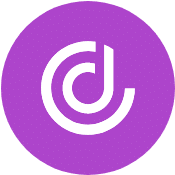Billing for HubSpot
Table of Contents
What Is Billing For HubSpot?
Billing For HubSpot refers to managing billing transactions within the HubSpot ecosystem. It encompasses a range of functionalities, from issuing invoices to tracking payments, tailored to integrate seamlessly with HubSpot’s suite of marketing, sales, and customer service tools. This system simplifies the financial aspects of customer relationship management, enabling businesses to efficiently handle their revenue operations alongside their customer engagement strategies within a unified platform.
A HubSpot billing integration connects HubSpot’s platform and various billing systems. This integration facilitates automated invoice generation, payment tracking, and financial data synchronization, directly linked with customer interactions and sales activities. It ensures that financial data is always updated and reflects the latest customer interactions, streamlining the process from sales negotiation to final payment. The integration supports various billing models, including subscription-based services, one-time purchases, and tiered pricing strategies.
Synonym
- HubSpot billing integration
Criteria for Choosing a Billing Solution in HubSpot
When integrating a billing solution with HubSpot, selecting the right one involves carefully considering several factors. These criteria ensure the solution aligns with your digital business model and enhances efficiency and customer experience.
Compatibility with Business Model
The billing solution must align with your specific business model. Whether you operate on a subscription basis, one-time sales, or a hybrid sales model, the chosen system should seamlessly support these formats. It’s essential to verify that the solution can handle varying pricing structures and payment plans prevalent in your business operations.
Ease of Integration
Look for a billing solution that integrates smoothly with HubSpot. The ideal integration should be straightforward and require minimal technical effort. It’s advantageous if the solution allows for the syncing of customer data, sales details, and financial transactions without the need for extensive customization.
Choosing the right billing solution for HubSpot integration involves more than just technical aspects. It also aims to improve the strategic value of your financial operations. A suitable system should elevate the role of billing from a transactional process to a strategic tool that drives business growth. It should offer insights into customer behavior, like payment trends and preferences, enabling more informed sales and marketing strategies. This integration can help improve cash flow management by enhancing invoice processing and collections efficiency. A suitable solution should be able to adapt quickly to market changes, including adjusting pricing strategies and incorporating new revenue streams, to maintain business competitiveness and agility. A suitable billing solution should integrate smoothly with your existing operations and enhance your business by offering valuable insights and enabling financial flexibility.
Automation Capabilities
Opt for a system that automates invoice creation, payment reminders, and revenue recognition. This feature reduces manual labor, decreases the chance of errors, and ensures timely invoicing and payment collection.
Scalability and Flexibility
The chosen billing solution should grow with the business. It needs to be scalable, capable of handling increased transaction volumes, and flexible enough to adapt to changing business needs. This flexibility includes adding new products, services, and pricing models without disrupting existing operations.
Security and Compliance
The solution should offer robust security measures and comply with standards like PCI DSS for payment processing. It should also be able to handle data in accordance with global financial regulations.
Reporting and Analytics
The right solution should offer comprehensive billing analytics and reporting capabilities, giving you a clear view of your financial health. It should be able to track key metrics like revenue growth, churn rate, and customer lifetime value, providing actionable insights.
User Experience
Finally, consider the user experience for both your team and your customers. The system should be user-friendly, making it easy for your team to manage billing and for your customers to make payments. A smooth, hassle-free experience can significantly impact customer satisfaction and retention.
Understanding the necessary criteria for selecting a HubSpot-compatible billing solution lays the groundwork for exploring advanced billing integrations, which can enhance financial operations with increased efficiency and sophistication.
Integrating Advanced Billing Solutions
Integrating advanced billing solutions with HubSpot marks a significant step towards achieving streamlined financial operations. These solutions extend beyond basic billing functionalities, offering features like sophisticated subscription management, dynamic pricing models, and extensive financial reporting.
Advanced billing integration options range from solutions tailored for small businesses to those suitable for large enterprises. Key considerations include handling complex billing scenarios, like usage-based billing or tiered pricing. Companies look for integrations that offer global support, catering to various tax jurisdictions and multiple currencies. Advanced features like revenue recognition and deferred revenue management are required for comprehensive financial reporting. Additionally, consider integrations that offer API-based customizations, allowing for a tailored fit with your business processes.
Evaluating Cost-Effectiveness of Integrated Billing Solutions
Evaluating the cost-effectiveness of integrated billing solutions requires consideration beyond just comparing prices. The evaluation includes assessing the return on investment based on time savings, error reduction, and improved cash flow management. Automated billing processes can lead to efficiency gains and improved revenue potential through better subscription management. Factor in the costs associated with manual reconciliation and data entry errors that the integration helps to eliminate. Finally, evaluate the solution’s ability to provide actionable financial insights that can drive strategic business decisions, adding significant value beyond its direct costs.
Future Trends in Billing Solutions for CRM Platforms like HubSpot
Emerging trends in billing solutions for CRM platforms like HubSpot point toward increasingly sophisticated and seamless integrations. One prominent trend is the rise of AI and machine learning, which are being used to automate complex billing processes and predict customer payment behaviors. Blockchain technology is also gaining traction, offering enhanced security and transparency in invoice processing. Another significant development is the growing emphasis on customer-centric billing experiences, with personalized billing options and flexible payment plans. There is also a shift towards greater regulatory compliance, with solutions designed to easily adapt to changing global tax laws and financial regulations. Companies can also expect to see more eco-friendly options, like paperless billing, aligning with broader sustainability initiatives. These trends suggest a future where billing solutions significantly enhance customer satisfaction and operational efficiency, moving beyond merely administrative functions.
Best Practices for Smooth Integration and Transition
Successfully integrating a new billing solution into HubSpot requires a strategic approach and careful execution. Adhering to best practices ensures a smooth transition, minimizes disruptions, and leverages the full potential of the integration. These include:
Planning and Stakeholder Engagement
Start with a comprehensive plan outlining your current billing processes and the functionalities needed in the new system. Engaging stakeholders from the outset ensures that all requirements are understood and met. This collaborative approach aligns expectations and paves the way for a smoother transition.
Testing and Training
Extensive testing should be conducted in a controlled environment to identify and resolve potential issues. Parallel to this, invest in comprehensive training for your team. Focus on both the technical aspects of the new system and its integration with existing business processes. Well-trained staff are key to a successful transition.
Data Migration and Security
Approach data migration with utmost care, prioritizing accuracy and security. Collaborate with your solution provider to ensure that historical billing data is transferred seamlessly and without loss. Secure data handling is imperative to maintain trust and compliance.
Monitoring and Feedback
After implementation, closely monitor the system for any anomalies or issues. Be open to user and customer feedback, using their insights to fine-tune the system. Continuous monitoring and adaptability are crucial for resolving unforeseen challenges post-integration.
Key Takeaways
Several important factors influence the selection of the appropriate billing solution for HubSpot integration. Prioritize seamless integration capabilities, scalability, and user-friendly interfaces. Focus on security features and regulatory compliance. Ensure the solution supports various billing models and payment methods, adapting to your specific business needs. Regular testing, stakeholder engagement, and team training are vital for a smooth transition. Post-implementation, continuous monitoring, and being receptive to feedback are key to refining the integration. These practices pave the way for a billing solution that meets current needs and accommodates future growth and changes.
People Also Ask
Does HubSpot have a Billing system?
Yes, HubSpot offers a billing system primarily designed to work seamlessly within its CRM platform. This system enables businesses to manage financial transactions such as invoicing and payment tracking in conjunction with their sales, marketing, and customer service activities.
Does HubSpot integrate with DealHub billing?
Yes, HubSpot can integrate with DealHub billing. This integration allows users to leverage DealHub’s advanced billing capabilities within the HubSpot ecosystem, including personalized pricing and quotes. It facilitates streamlined sales and billing processes, ensuring data consistency and improved efficiency.






